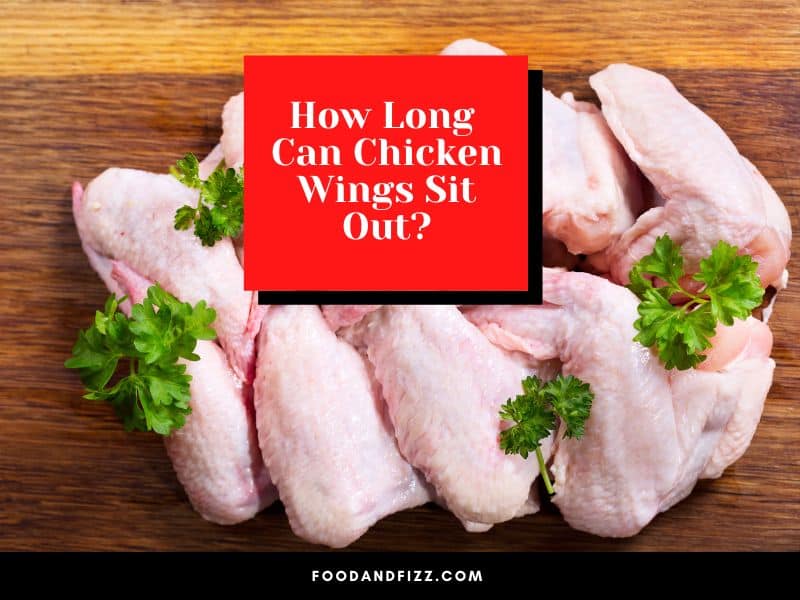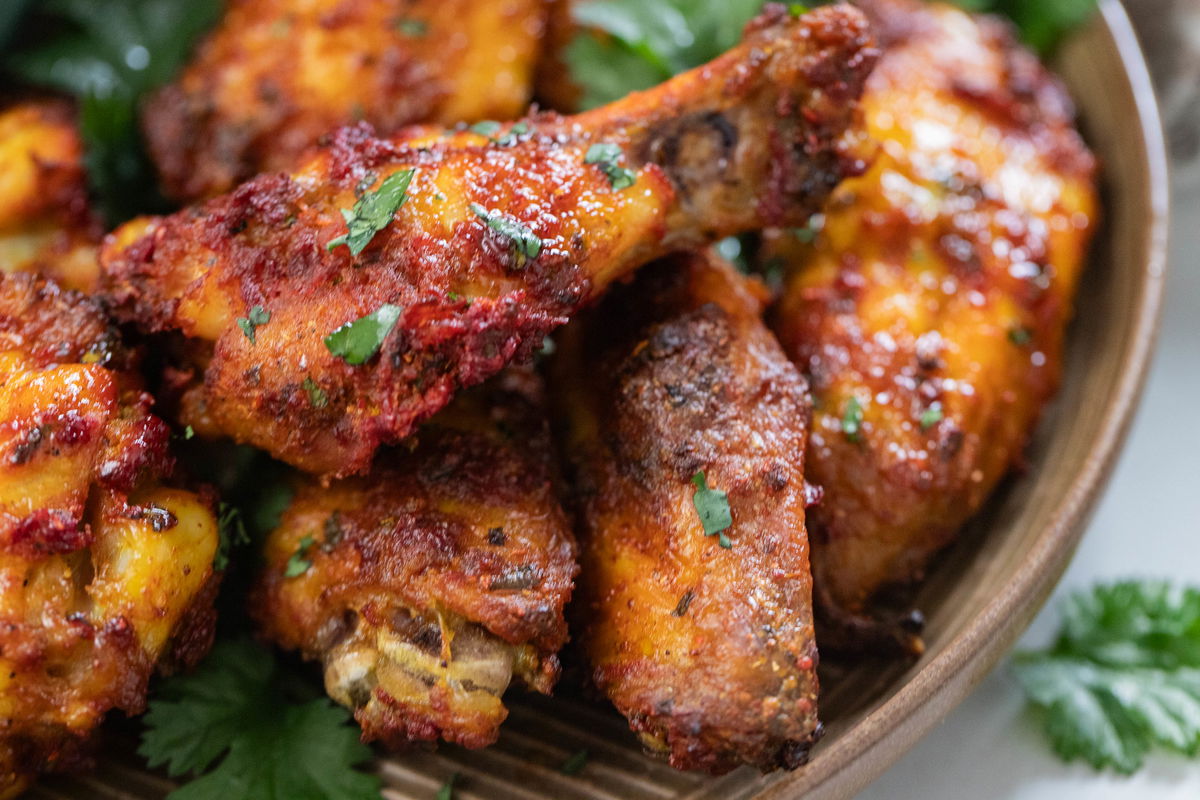Have you ever hosted a party where those delicious chicken wings ended up sitting on the counter longer than you intended? Maybe you got caught up in conversation or forgot to put them away. We’ve all been there! But when it comes to chicken wings, timing matters a lot for food safety.
As a food enthusiast who’s made plenty of mistakes in the kitchen (including leaving food out too long) I want to share what I’ve learned about chicken wing safety. The short answer might surprise you with how strict it actually is.
The Hard Truth About Chicken Wings at Room Temperature
Cooked chicken wings should never sit out at room temperature for more than 2 hours. This time reduces to just 1 hour if the temperature is above 90°F (32°C)
This isn’t just an overly cautious guideline – it’s based on science and recommended by the United States Department of Agriculture (USDA) to prevent foodborne illness
Why the 2-Hour Rule Exists: The Danger Zone
The “danger zone” is what food safety experts call the temperature range between 40°F and 140°F (4°C-60°C). When chicken wings sit in this range, bacteria like Salmonella, E. coli, and Staphylococcus aureus multiply rapidly.
Consider these facts:
- Bacteria can double in number every 20 minutes in the danger zone
- Chicken is particularly susceptible to bacterial contamination
- The moist environment and protein content of chicken wings make them a perfect breeding ground for bacteria
Raw vs. Cooked Chicken Wings: Different Rules?
While our focus is mainly on cooked wings, it’s worth noting that raw chicken wings should never be left at room temperature. The bacterial risk is even higher with raw poultry, and you should refrigerate or freeze them immediately after purchase.
Signs Your Chicken Wings Have Gone Bad
While the 2-hour rule is the safest guideline, sometimes you might wonder if your wings are still okay. Look for these warning signs:
- Unpleasant odor: A sour or pungent smell is a major red flag
- Slimy texture: If they feel sticky or slimy to the touch, toss them
- Discoloration: Cooked wings should be golden-brown; if they’re turning gray or greenish, that’s bad news
But here’s the tricky part – bacteria can reach dangerous levels without causing any visible changes. That’s why time is a more reliable safety indicator than appearance.
How to Store Chicken Wings Properly
Let’s talk about storing your wings correctly:
Refrigeration (Short-Term Storage)
- Cool wings quickly by spreading them out on a shallow container
- Refrigerate within 2 hours of cooking (1 hour in hot weather)
- Store in airtight containers or wrap tightly
- Properly refrigerated wings last 3-4 days
Freezing (Long-Term Storage)
- Wrap wings individually or in small portions
- Store in freezer-safe containers or heavy-duty freezer bags
- Frozen cooked wings maintain quality for 2-3 months
- Thaw in the refrigerator overnight before reheating
Reheating Chicken Wings Safely
When it’s time to enjoy those leftovers, follow these guidelines:
- Always reheat to 165°F (74°C) – Use a food thermometer to verify
- Choose your method:
- Oven: 350°F (175°C) until heated through
- Microwave: Short intervals, turning frequently
- Air fryer: 350°F (175°C) for 5-10 minutes
Pro tip: Avoid reheating wings multiple times. Each reheat/cool cycle increases bacterial risk.
What Happens If You Eat Chicken Wings Left Out Too Long?
If you’ve eaten wings that sat out beyond the safe time limit, you might experience food poisoning symptoms like:
- Nausea and vomiting
- Diarrhea
- Abdominal cramps
- Fever
- Chills
These symptoms typically appear within 6-48 hours after eating contaminated food. Most people recover within a week, but severe cases may require medical attention.
Common Questions About Chicken Wings Safety
Does sauce affect how long wings can sit out?
Absolutely! Sauces, especially those containing sugar and moisture, can actually accelerate bacterial growth. Wings with sauce require even closer adherence to the 2-hour rule.
What if my wings are still warm when I refrigerate them?
While it’s ideal to cool wings slightly before refrigerating, it’s better to refrigerate warm wings than to leave them out longer than 2 hours. The risk of bacterial growth at room temperature far outweighs concerns about warming up your fridge slightly.
Can I tell if wings are safe just by looking or smelling?
Unfortunately, no. While visible signs like sliminess, discoloration, or bad odors indicate spoilage, bacteria can reach dangerous levels without causing noticeable changes. Time is your most reliable safety indicator.
If I only ate one or two wings that were out too long, will I get sick?
The likelihood depends on several factors including the amount of bacteria present and your individual immune system. While eating just a small amount might reduce the risk, it doesn’t eliminate it entirely.
Special Considerations for Parties and Events
Wings are party favorites, but they require special attention when serving:
- Use chafing dishes or warming trays to keep hot wings above 140°F
- Set a timer to remind yourself when the 2-hour mark approaches
- Serve in small batches rather than putting all wings out at once
- Consider a wings station where you refresh the supply periodically
The Bottom Line on Chicken Wing Safety
I’ve learned through experience (and yes, through one unfortunate bout of food poisoning) that food safety rules exist for good reason. The 2-hour rule for chicken wings isn’t just an arbitrary guideline – it’s based on scientific understanding of bacterial growth.
Remember:
- 2 hours maximum at room temperature (1 hour above 90°F)
- When in doubt, throw it out!
- Proper cooling, storage and reheating are essential
Food safety might not be the most exciting topic, but trust me – few things ruin a good party memory faster than everyone getting sick afterward!
Have you ever had an experience with food left out too long? Share your stories or questions in the comments below!

So, what are “Boneless” Chicken wings?
So-called “boneless” chicken wings are not chicken wings at all. Boneless chicken wings are made from breast meat. The breast meat is removed from the bone and cut into a size and shape that resembles chicken wings.

These are typically breaded and deep-fried. Boneless chicken wings save you the trouble of having to eat around and clean up after chicken bones. However, since they come from the breast, the meat is naturally drier and less flavorful since they come from the breast.
A Note on Food Safety
Since party wings are often served buffet style alongside other appetizers or snacks, it’s important to keep basic food safety guidelines in mind. Do not allow wings to sit out for more than two hours or one hour if it is hot where they are being kept (90°F or warmer). If you want to make them available to your guests over a long period. Cooked wings can be refrigerated and reheated if you make too many.
